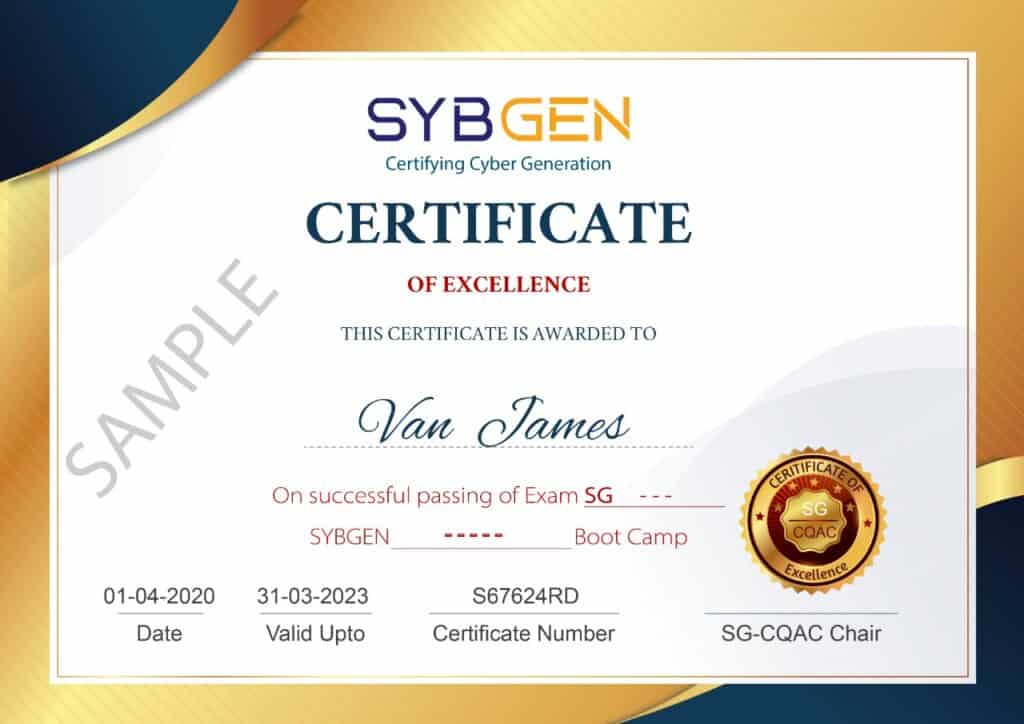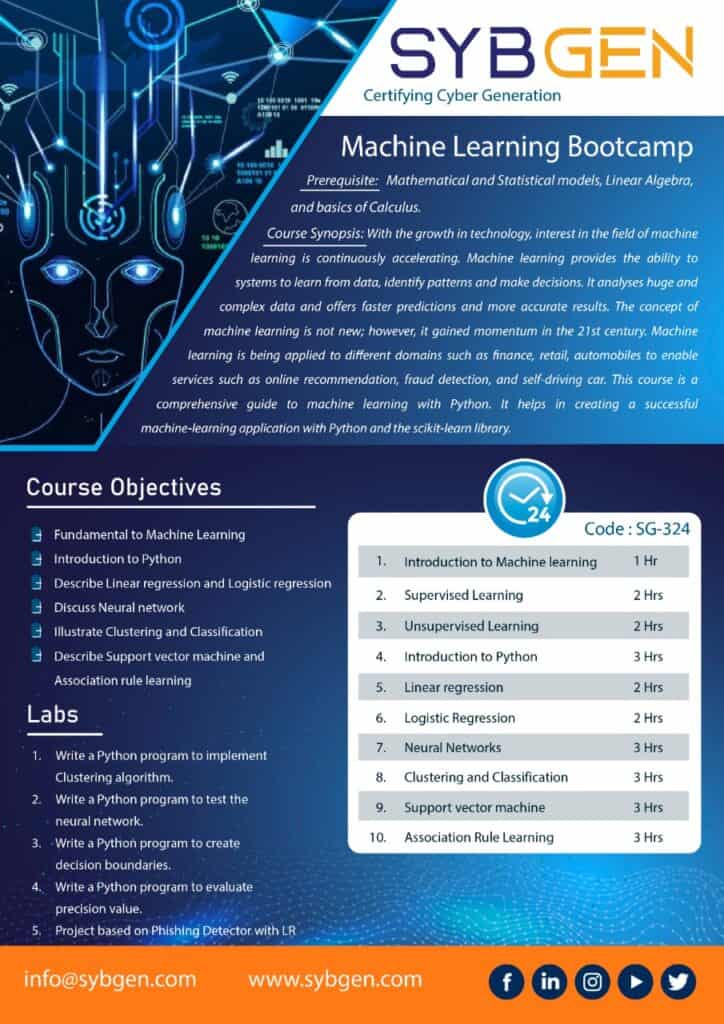
Course Information
Duration
24 hrs
Level
Academic
Language
English
Exam Information
Exam Code
SG-324
Total Questions
60
Duration
90 mins
Passing %
60%
Pre-requisite
Mathematical and Statistical models, Linear Algebra, and basics of Calculus.
Course Description
Machine Learning Bootcamp With the growth in technology, interest in the field of machine learning is continuously accelerating. Machine learning provides the ability to systems to learn from data, identify patterns and make decisions. It analyses huge and complex data and offers faster predictions and more accurate results. The concept of machine learning is not new; however, it gained momentum in the 21st century. Machine learning is being applied to different domains such as finance, retail, automobiles to enable services such as online recommendation, fraud detection, and self-driving car. This course is a comprehensive guide to machine learning with Python. It helps in creating a successful machine-learning application with Python and the scikit-learn library.
Course Objectives
1.Fundamental to Machine Learning
2.Introduction to Python
3.Describe Linear regression and Logistic regression.
4.Discuss Neural network
5.Illustrate Clustering and Classification.
6.Describe Support vector machine and Association rule learning
Course Curriculum
- Introducing Machine Learning
- Exploring Types of Machine Learning
- Exploring Applications of Machine Learning
- Exploring Advantages of Machine leaning
- Introducing Supervised Learning
- Exploring Linear Regression and Logistic Regression
- Learning Decision Tree and Random Forest
- Exploring Support Vector Machine (SVM)
- Describing Naive Bayes
- Exploring K-Nearest Neighbours
- Introducing Unsupervised Learning
- Exploring K-Means Clustering and Fuzzy K-Means Clustering
- Exploring Hierarchical Clustering Algorithm
- Introducing Python with Machine Learning
- Exploring Scikit-learn
- Exploring Machine learning model using Scikit-learn
- Exploring Digit recognition with Scikit-learn
- Introducing Simple Linear Regression
- Exploring Estimation Methods
- Exploring Applications of Linear Regression
- Introducing Logistic Regression
- Exploring Latent Variable Interpretation
- Exploring Logistic Function
- Learning about Coefficients and Formal Mathematical Specification
- Introducing Artificial Neural Network
- Exploring Feedforward ANN
- Learning in ANN
- Exploring Applications and Advantages of ANNs
- Introducing K-means Clustering
- Exploring Hierarchical Clustering
- Exploring K-Nearest Neighbour
- Learning Decision tree classification
- Introducing Linear SVM
- Computing the SVM classifier
- Exploring Extensions of SVM
- Introducing Association Rule Learning
- Exploring Types of Association Rule Mining
- Exploring Advantages of Association Rule Learning



